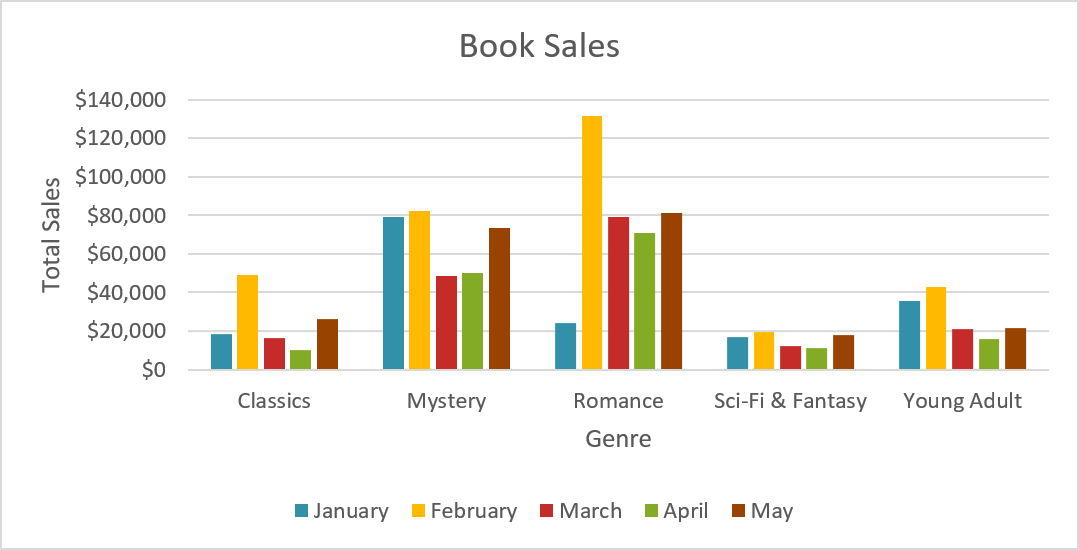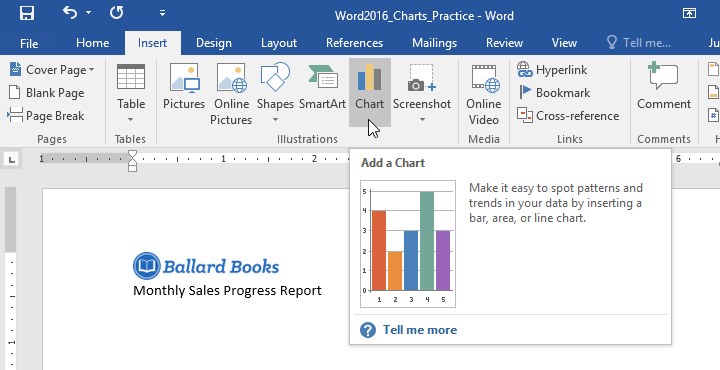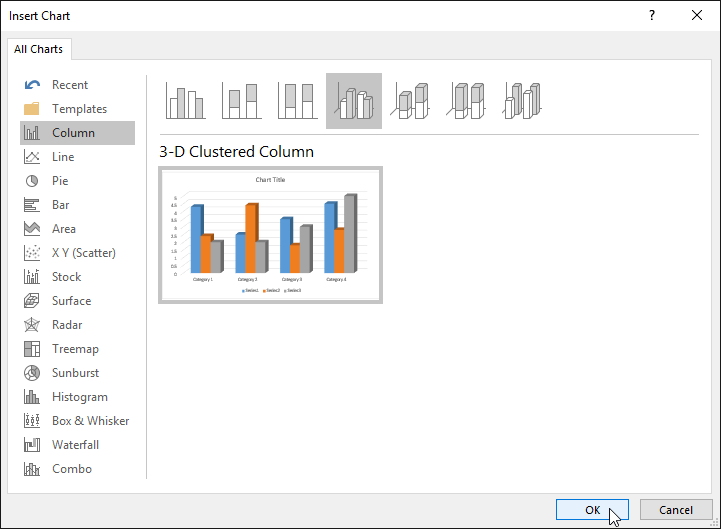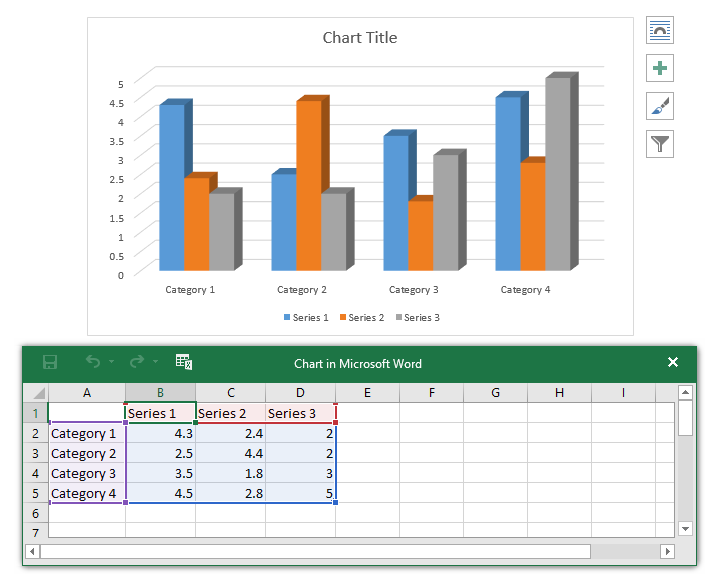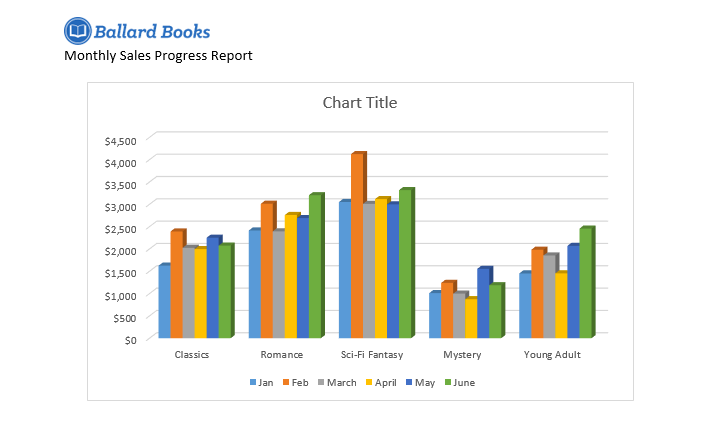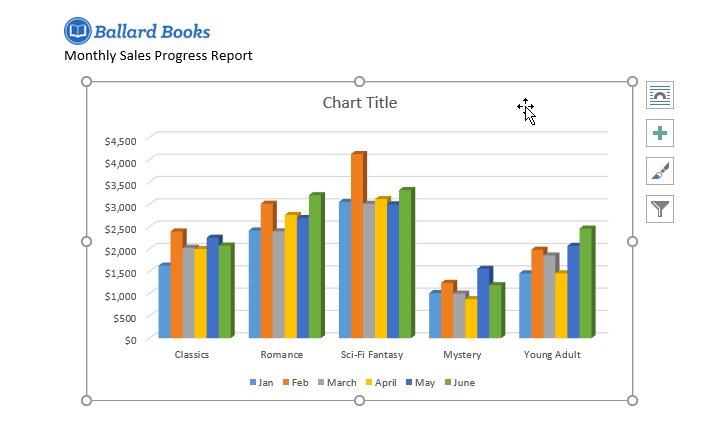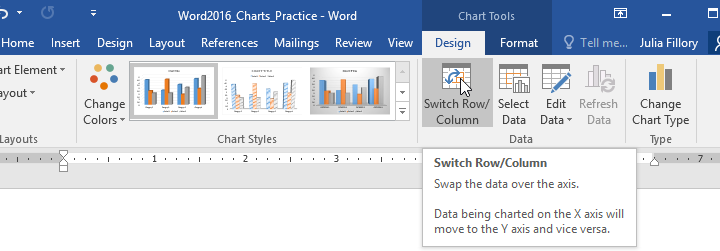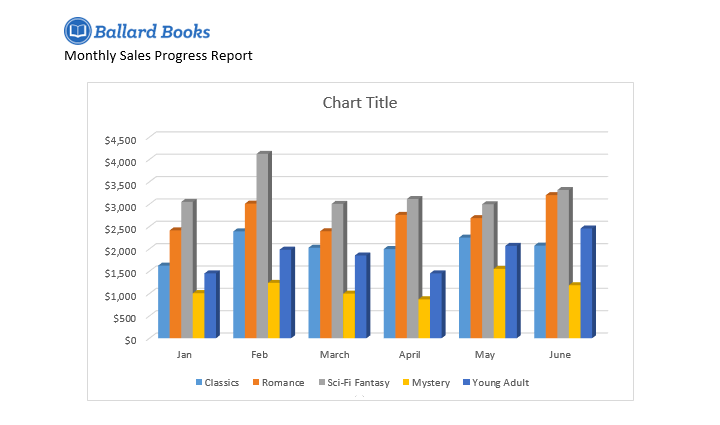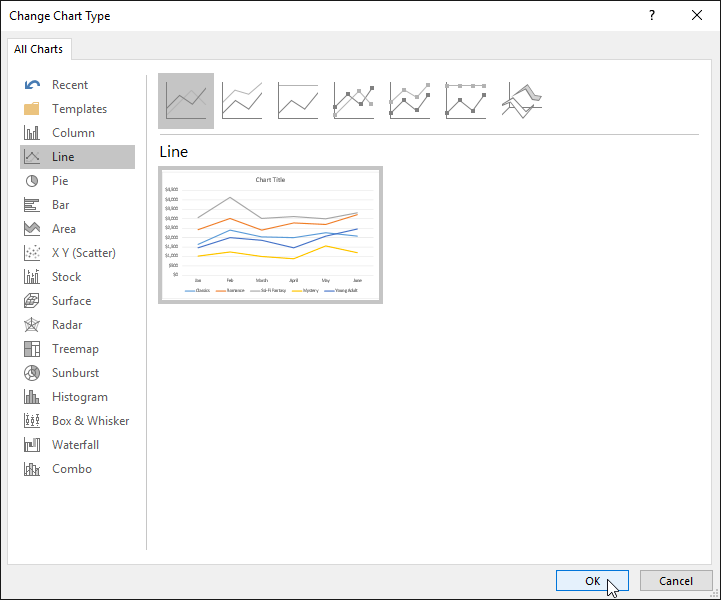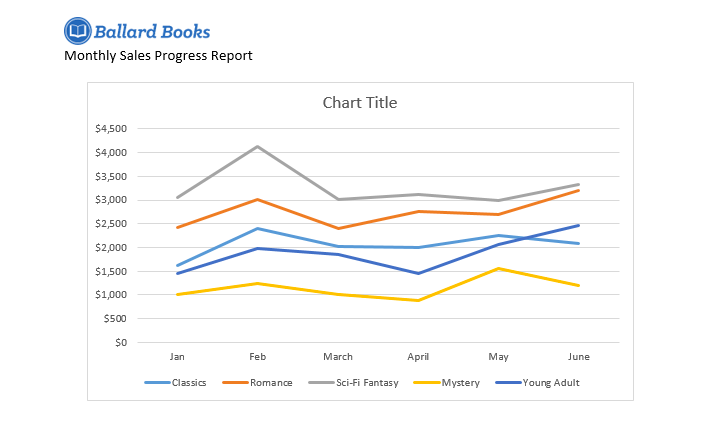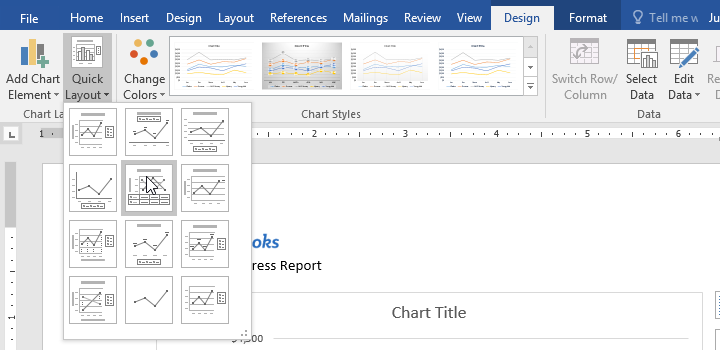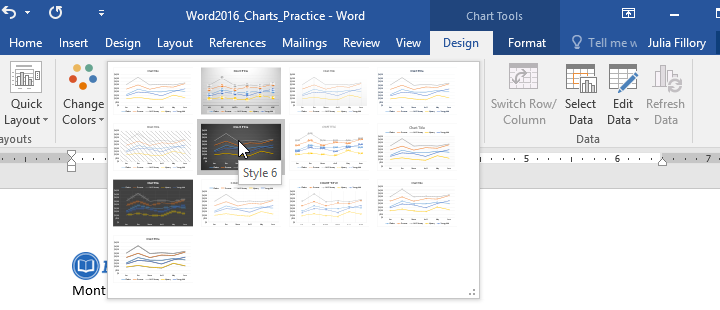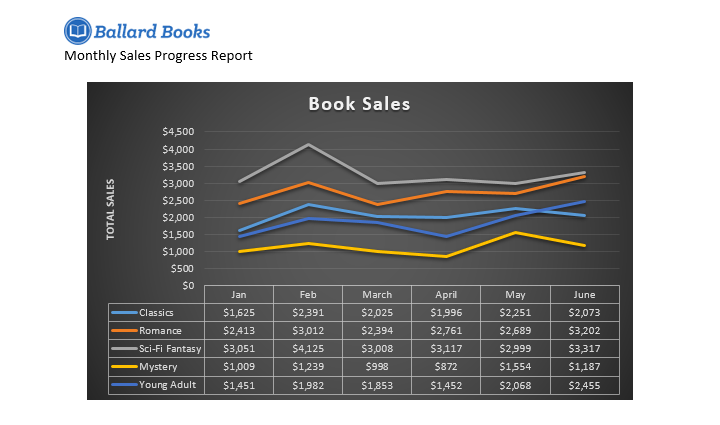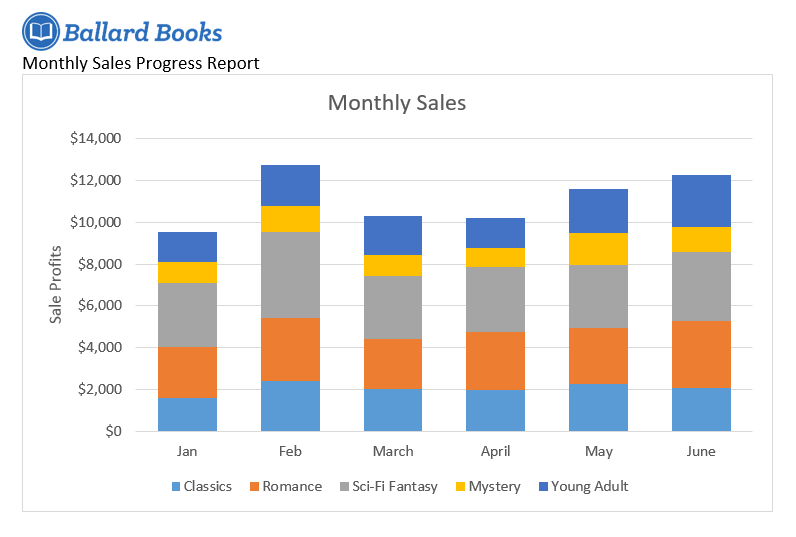/en/word/tables/content/
Introduction
A chart is a tool you can use to communicate information graphically. Including a chart in your document can help you illustrate numerical data like comparisons and trends so it's easier for the reader to understand.
Watch the video below to learn more about creating charts.
Types of charts
There are several types of charts to choose from. To use charts effectively, you'll need to understand what makes each one unique.
Click the arrows in the slideshow below to learn more about the types of charts in Word.
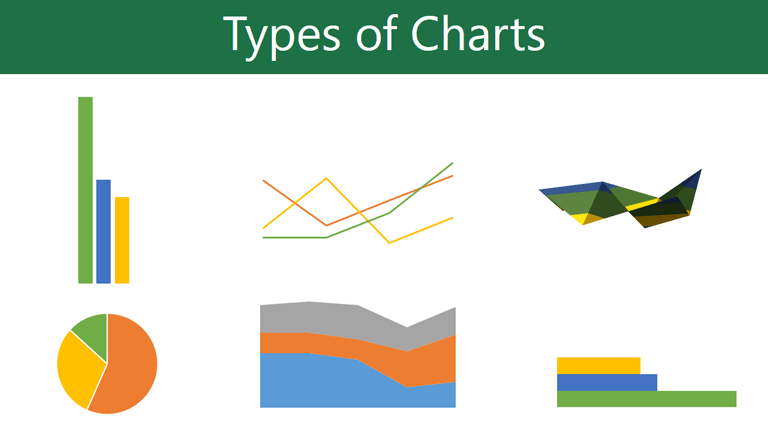
Word has a variety of chart types, each with its own advantages. Click the arrows to see some of the different types of charts available in Word.
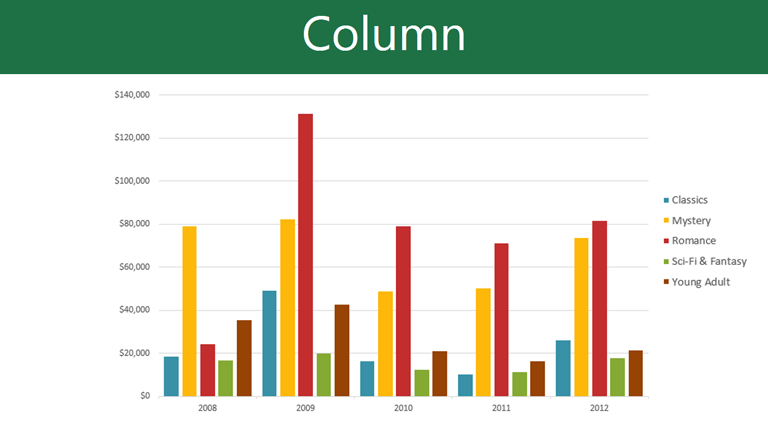
Column charts use vertical bars to represent data. They can work with many different types of data, but they're most frequently used for comparing information.
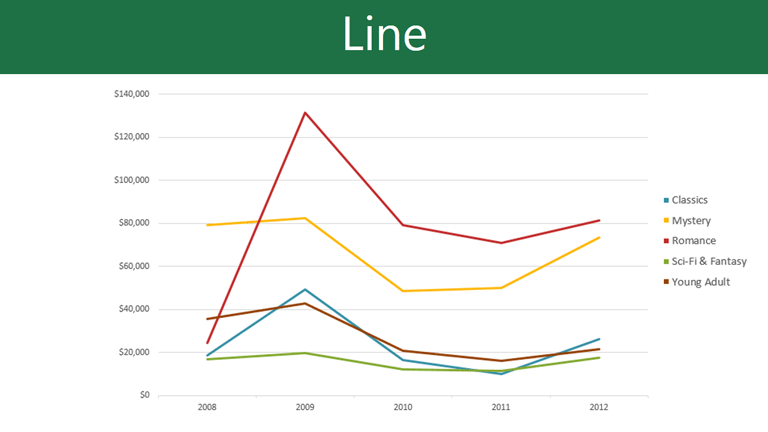
Line charts are ideal for showing trends. The data points are connected with lines, making it easy to see whether values are increasing or decreasing over time.
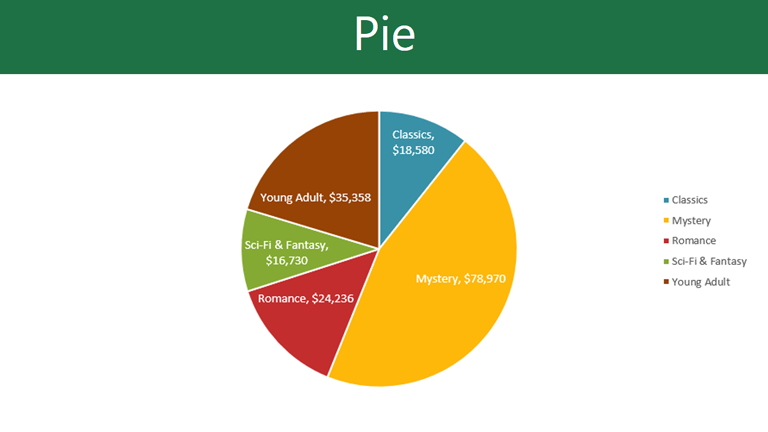
Pie charts make it easy to compare proportions. Each value is shown as a slice of the pie, so it's easy to see which values make up the percentage of a whole.
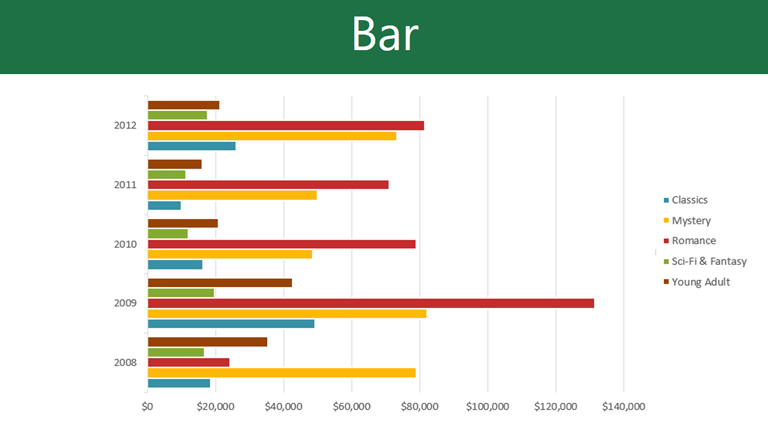
Bar charts work just like column charts, but they use horizontal rather than vertical bars.
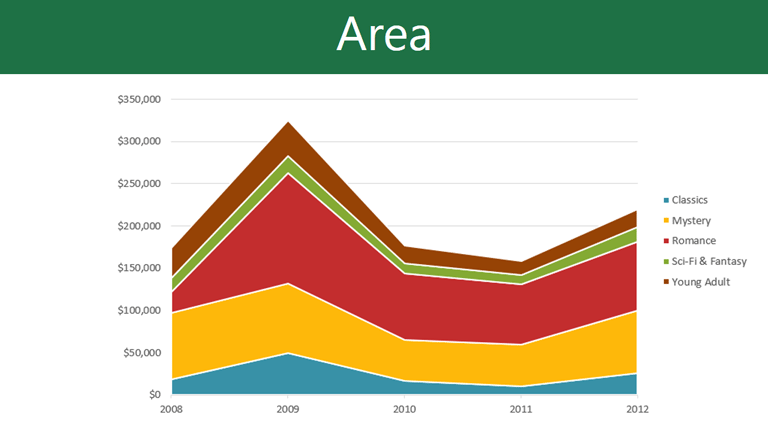
Area charts are similar to line charts, except the areas under the lines are filled in.
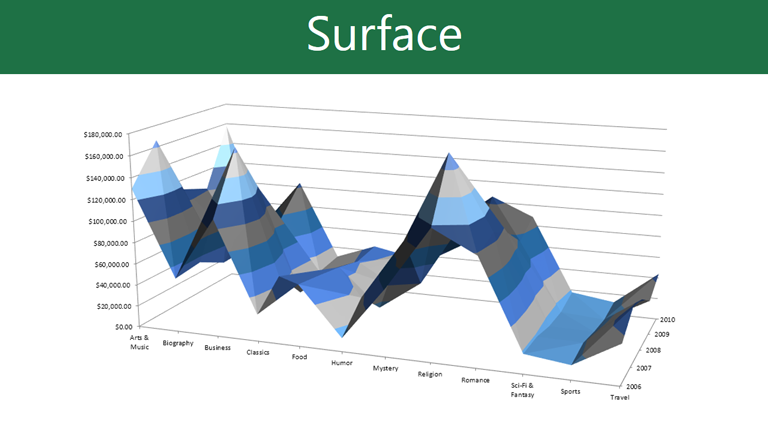
Surface charts allow you to display data across a 3D landscape. They work best with large data sets, allowing you to see a variety of information at the same time.

Identifying the parts of a chart
In addition to chart types, you'll need to understand how to read a chart. Charts contain several different elements—or parts—that can help you interpret data.
Click the buttons in the interactive below to learn about the different parts of a chart.
Inserting charts
Word utilizes a separate spreadsheet window for entering and editing chart data, much like a spreadsheet in Excel. The process of entering data is fairly simple, but if you're unfamiliar with Excel, you might want to review our Cell Basics lesson.
To insert a chart:
- Place the insertion point where you want the chart to appear.
- Navigate to the Insert tab, then click the Chart command in the Illustrations group.
- A dialog box will appear. To view your options, choose a chart type from the left pane, then browse the charts on the right.
- Select the desired chart, then click OK.
- A chart and spreadsheet window will appear. The text in the spreadsheet is merely a placeholder that you'll need to replace with your own source data. The source data is what Word will use to create the chart.
- Enter your source data into the spreadsheet.
- Only the data enclosed in the blue box will appear in the chart. If necessary, click and drag the lower-right corner of the blue box to manually increase or decrease the data range.
- When you're done, click X to close the spreadsheet window.
- The chart will be complete.
To edit your chart again, simply select it, then click the Edit Data command on the Design tab. The spreadsheet window will reappear.
Creating charts with existing Excel data
If you already have data in an existing Excel file that you'd like to use in Word, you can copy and paste it instead of entering it by hand. Just open the spreadsheet in Excel, copy the data, then paste it as the source data in Word.
You can also embed an existing Excel chart into your Word document. This is useful if you know you're going to be updating your Excel file later; the chart in Word will update automatically any time a change is made.
Read our guide on Embedding an Excel Chart for more information.
Modifying charts with chart tools
There are many ways to customize and organize your chart in Word. For example, you can quickly change the chart type, rearrange the data, and even change the chart's appearance.
To switch row and column data:
Sometimes you may want to change the way your chart data is grouped. For example, in the chart below the data is grouped by genre, with columns for each month. If we switched the rows and columns, the data would be grouped by month instead. In both cases, the chart contains the same data—it's just presented in a different way.
- Select the chart you want to modify. The Design tab will appear on the right side of the Ribbon.
- From the Design tab, click the Edit Data command in the Data group.
- Click the chart again to reselect it, then click the Switch Row/Column command.
- The rows and columns will be switched. In our example, the data is now grouped by month, with columns for each genre.
To change the chart type:
If you find that your chosen chart type isn't suited to your data, you can change it to a different one. In our example, we'll change the chart type from a column chart to a line chart.
- Select the chart you want to change. The Design tab will appear.
- From the Design tab, click the Change Chart Type command.
- A dialog box will appear. Select the desired chart, then click OK.
- The new chart type will be applied. In our example, the line chart makes it easier to see trends over time.
To change the chart layout:
To change the arrangement of your chart, try choosing a different layout. Layout can affect several elements, including the chart title and data labels.
- Select the chart you want to modify. The Design tab will appear.
- From the Design tab, click the Quick Layout command.
- Choose the desired layout from the drop-down menu.
- The chart will update to reflect the new layout.

If you don't see a chart layout that has exactly what you need, you can click the Add Chart Element command on the Design tab to add axis titles, gridlines, and other chart elements.
To fill in a placeholder (such as the chart title or axis title), click the element and enter your text.
To change the chart style:
Word's chart styles give you an easy way to change your chart's design, including the color, style, and certain layout elements.
- Select the chart you want to modify. The Design tab will appear.
- From the Design tab, click the More drop-down arrow in the Chart Styles group.
- A drop-down menu of styles will appear. Select the style you want.
- The chart style will be applied.
For even faster customization, use the formatting shortcuts to the right of your chart. These allow you to adjust the chart style, chart elements, and even add filters to your data.
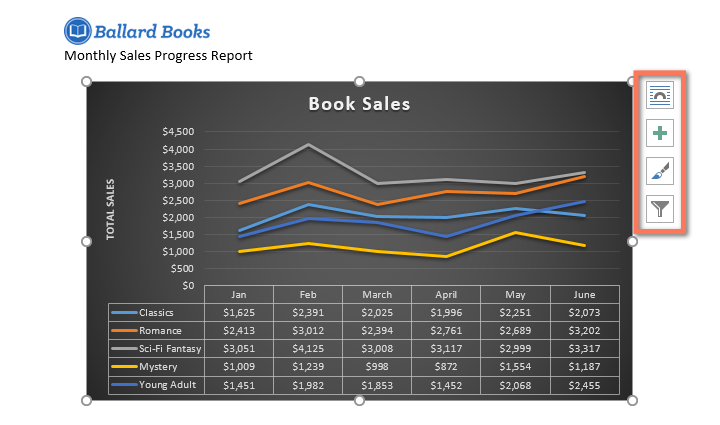
Challenge!
- Open our practice document. You will also need to download our practice workbook.
- Insert a Line chart into our practice Word document.
- Open our practice workbook in Excel. Copy the data and paste it into the chart's spreadsheet.
- Change the chart title to Monthly Sales.
- Change the chart type to Stacked Column.
- Use the Quick Layout drop-down menu to change to Layout 3.
- Use the Add Chart Element drop-down menu to add a Primary Vertical Axis Title.
- Double-click the axis title, then rename it Sale Profits.
- Switch the Row/Column data.
- When you're finished, your chart should look something like this:
/en/word/checking-spelling-and-grammar/content/


